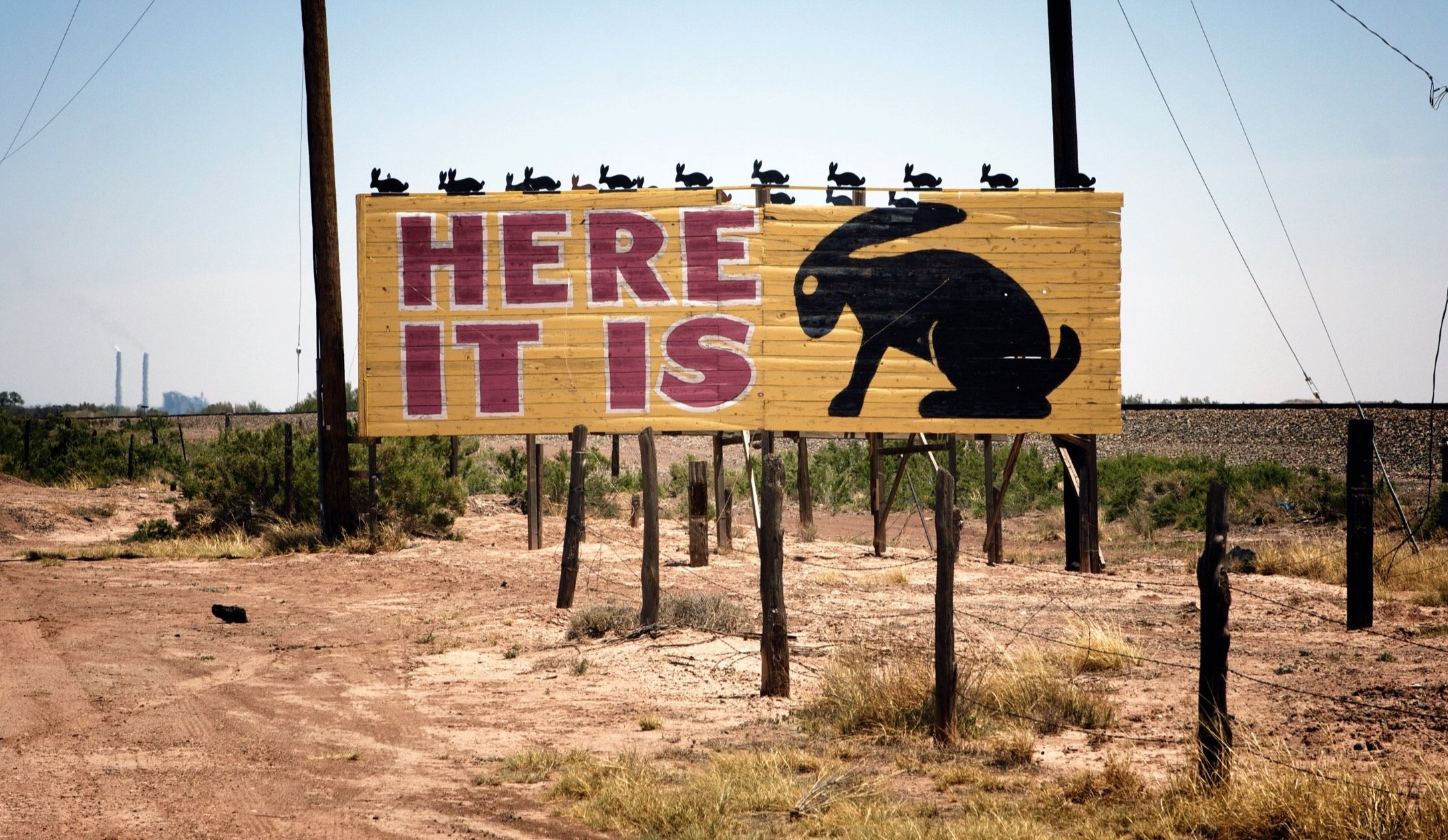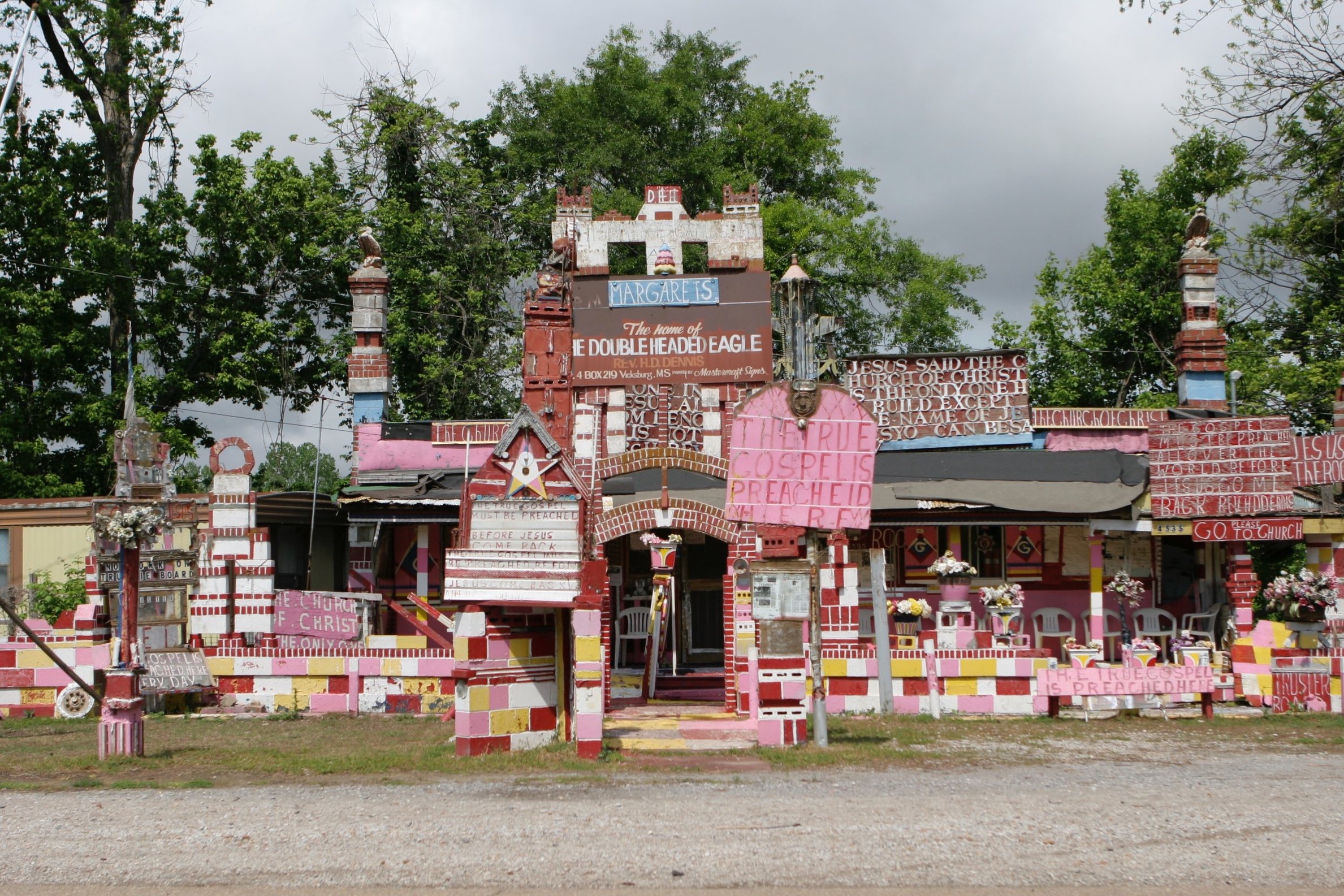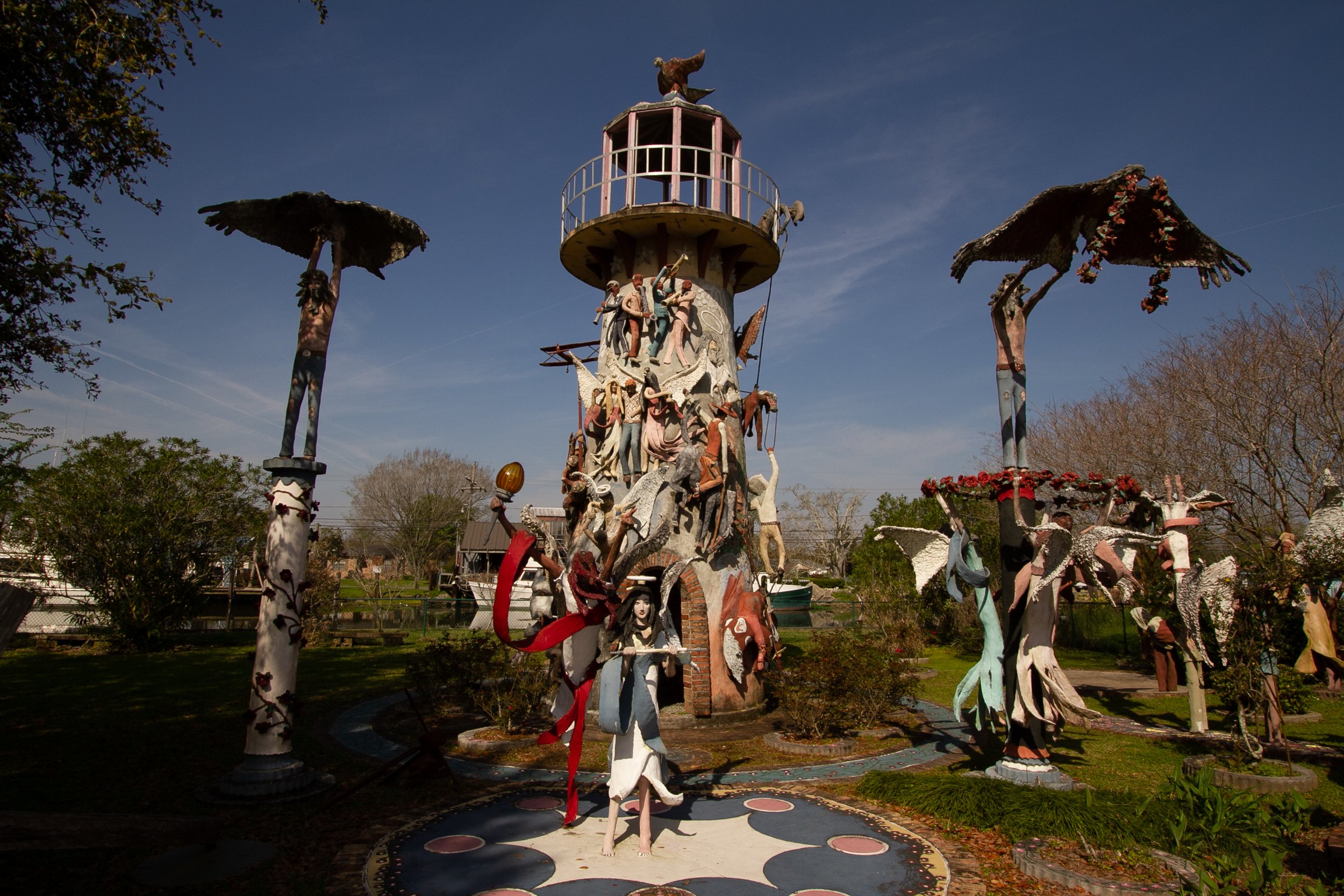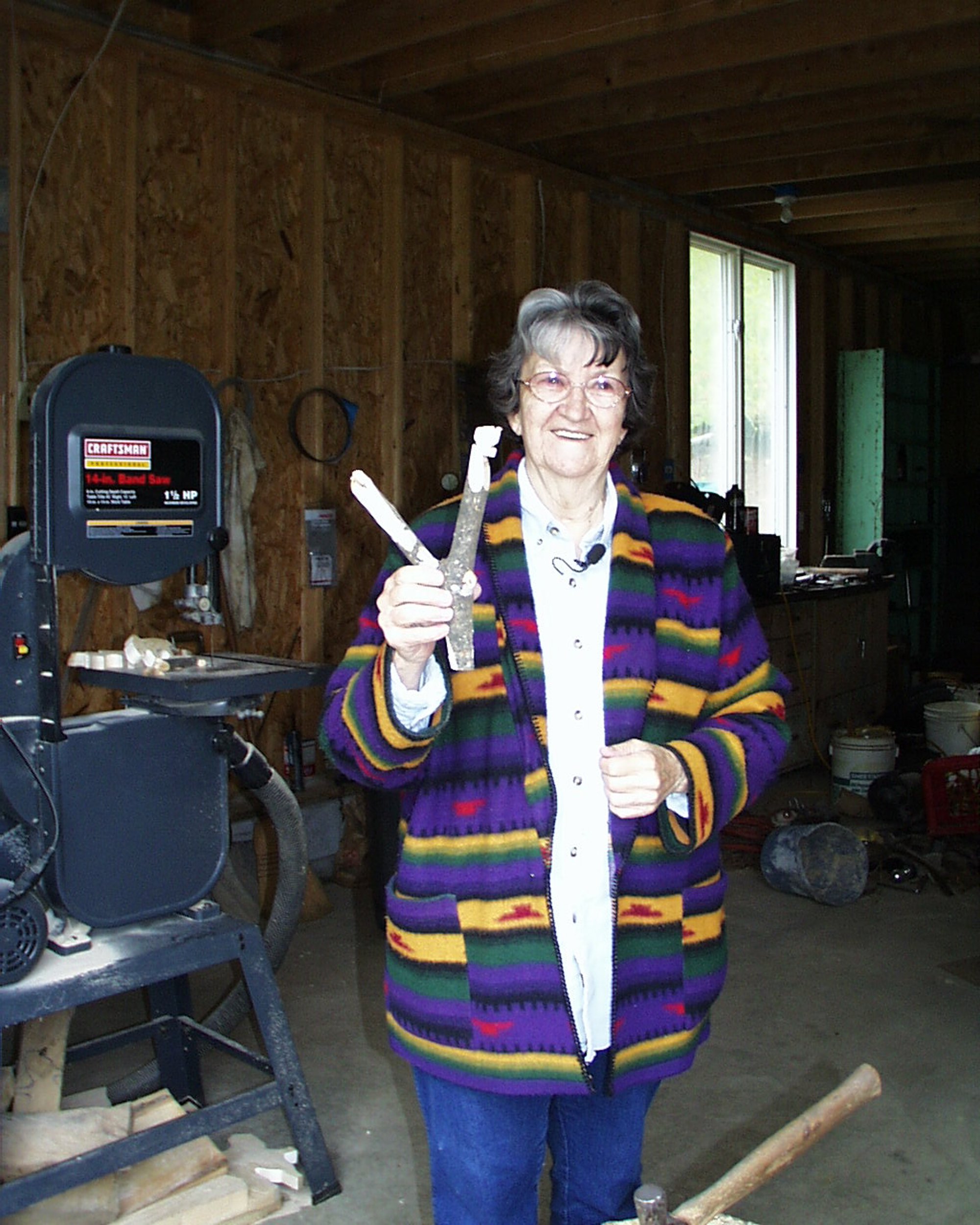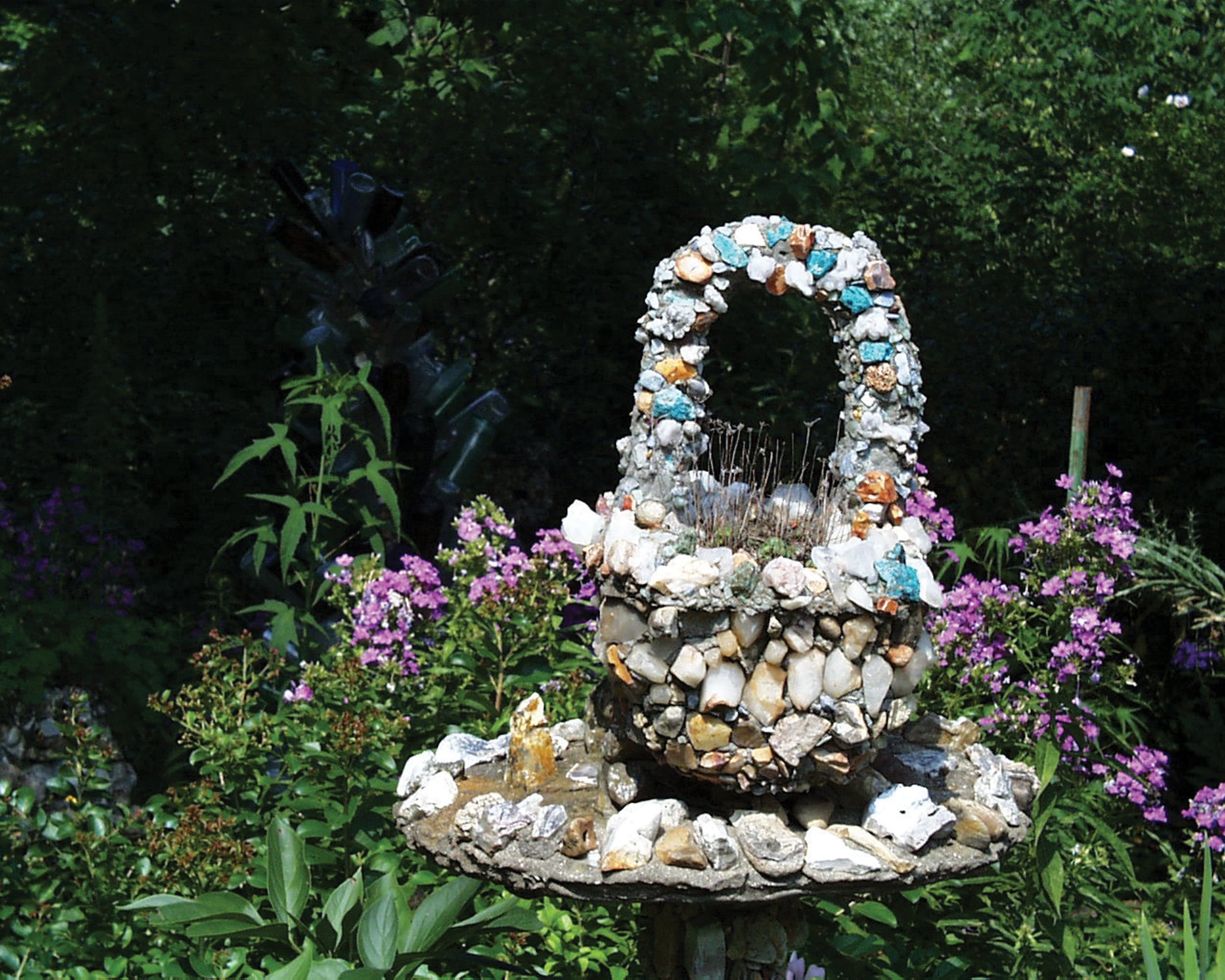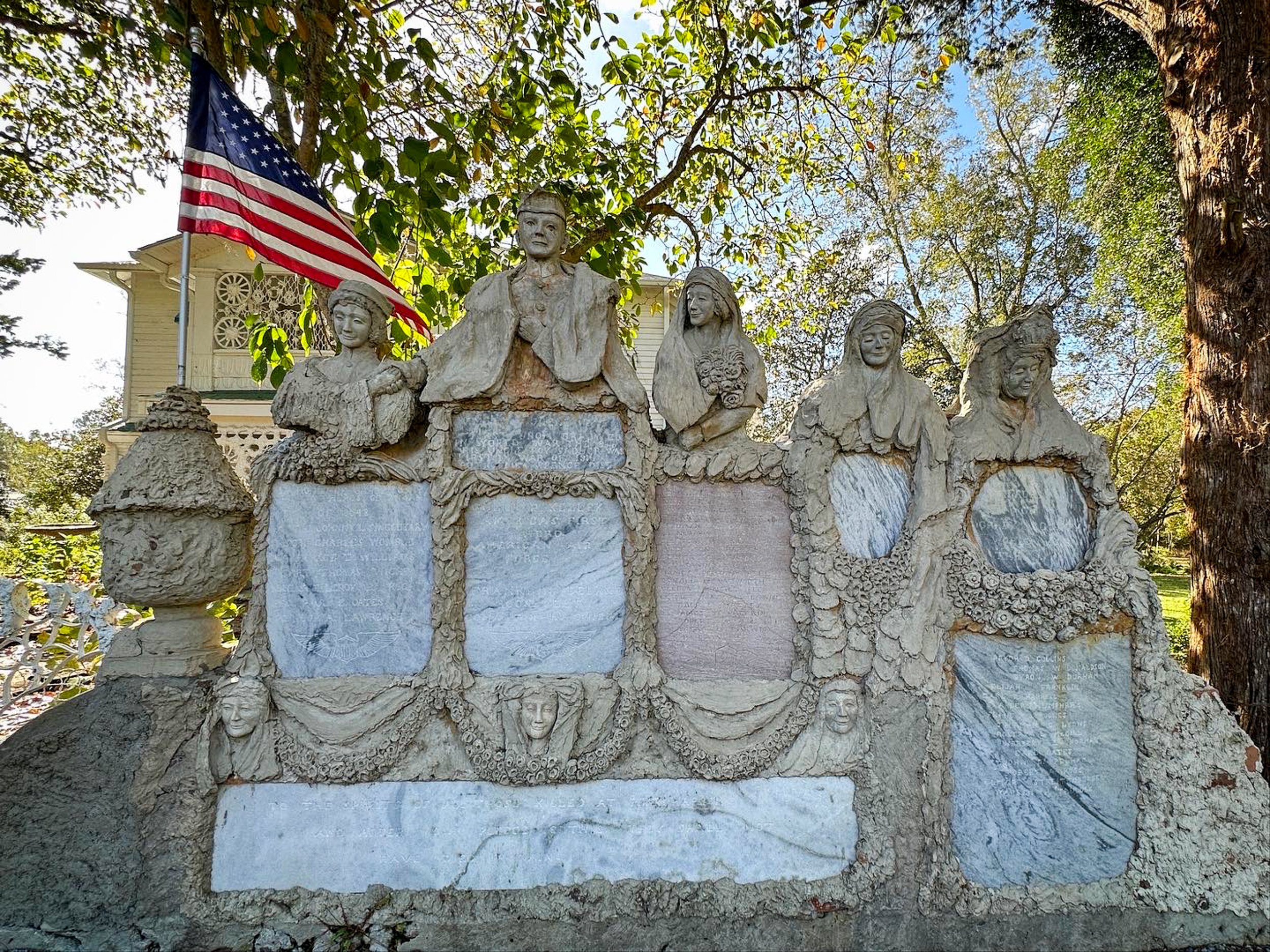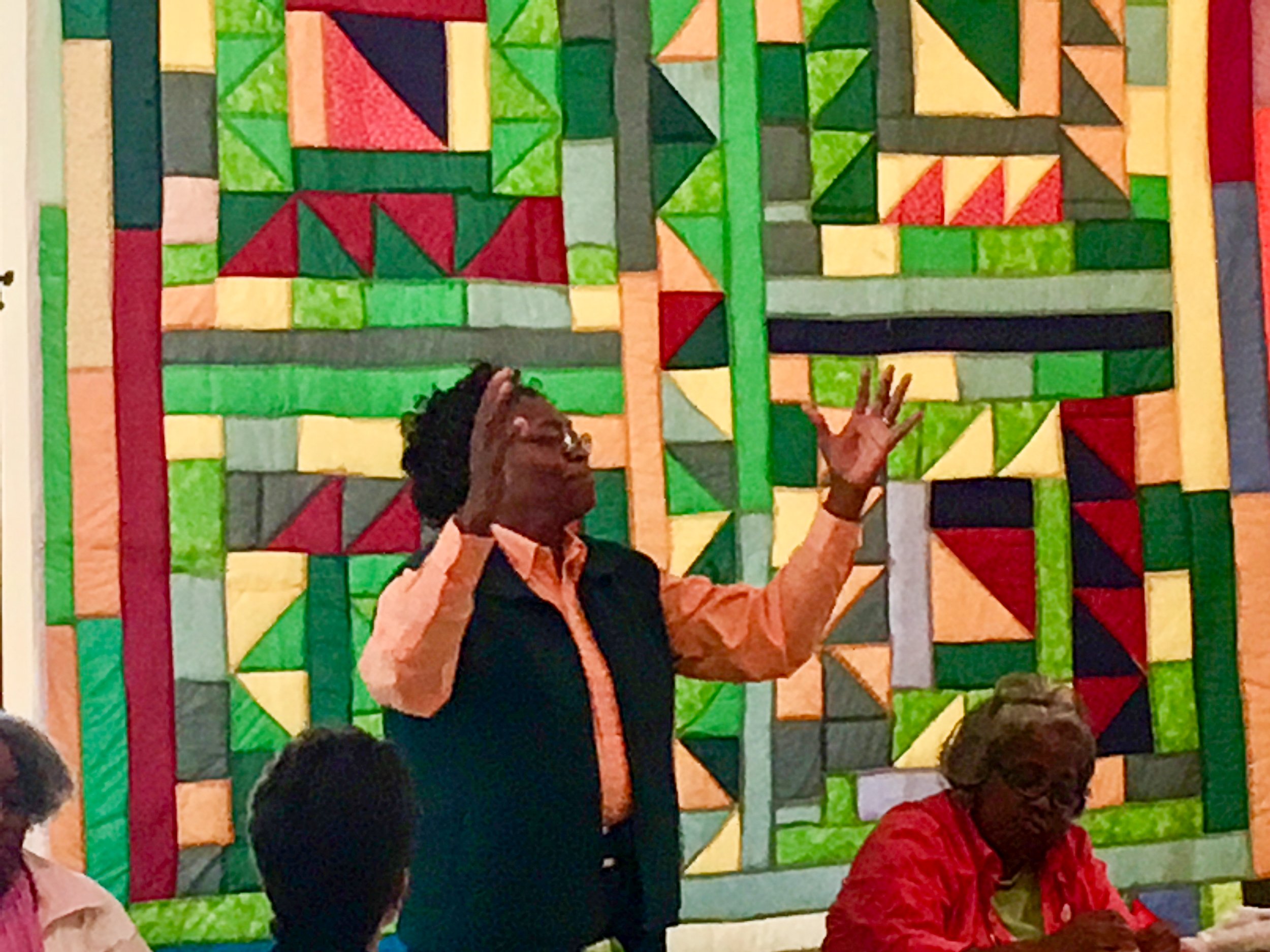
Detour Art
A curated guide to Artist-built Environments
region by region, coast-to-coast.
Dedicated to the sheer joy of outsider, folk, visionary, self-taught, vernacular art and environment discoveries found all along the back roads (and side streets).
Artist-built Environments in the United States
Note: Things change, so check first before arriving. When visiting art environments, remember they are usually on private property, so please be respectful and don’t trespass.
“PECULIAR TRAVEL SUGGESTIONS ARE DANCING LESSONS FROM GOD.”
— Kurt Vonnegut
Road stories
Garden of Salvation - Kenny Hill
Kenny Hill is a bricklayer by trade. One day, for who knows what reason, he started working on a sculpture. It was a self-portrait, and he told a neighbor that if he liked it when it was done, he was going to make more. He must have liked it, because for the next twelve years, between bouts of earning a living, he toiled away on a small plot of land just off a bayou in Chauvin, Louisiana.
Working in concrete, he built life-size figures, telling his version of the story of salvation. There are angels holding horns, and angels with sand clocks, angels with swords, and angels playing harps, and then more angels after that. There's Christ on the cross, and the Gates of Heaven. There are lost souls, world-weary people, and there are self-portraits of Kenny, along the path at various stages. And, as you might expect, there are the Gates of Hell, as a reminder of the wrong path.
Sleep Outside the Box in a Concrete Wigwam
At one time, motels in this country were built with a little more character than they are today. Back in the 1930s, long before Super-This-and-Thats and Thumbelina-sized "free" cups of coffee, Frank Redford had a vision of Americans traveling the open road, stopping at night to sleep comfortably in his wigwam motels.
Minnie Adkins
Minnie Adkins began whittling as child, back when women didn't carry pocketknives or hunks of wood. But that didn't stop Minnie from carving roosters and dogs from sticks whenever she had the chance. She's continued to develop her craft and her possums, foxes, and chickens, and more are prominently featured at the Kentucky Folk Art Center and in some of the world's top collections of self-taught art. After her first husband, Garland, died, Minnie remarried and convinced the new guy, Herman,that he had the makings of an artist too, though he prefers working with metal. The couple hunkered down in a new, improved version of what they call Happy Gizzard Hollow, which has become an axis of self-taught art for the rural community around it.
Quigley's Castle - Elise Quigley
In 1943, Elise Quigley asked her husband to build her a new house. Because she loved nature, she designed the house with 32 glass window boxes. When he didn't act quickly enough, Mrs. Q took matters into her own hands. She moved all their belongings out to the barn - forcing him to begin the building process. Along the way, she started adding the decorative rockwork that adds to its splendor. With a Plexiglass butterfly wall inside and bottle trees and stone fences around the grounds, Mrs. Quigley's digs are undeniably memorable.
Mrs. Pope's Museum - Laura (Forester) Pope
Laura Pope built a sculpture garden that surrounded her general store and house in a rural area near Ochlocknee, Georgia. It once included about 200 accomplished life-size cement figures of famous women and heroes of both World Wars, Martha Berry, Red Cross, Gold Star Mothers, and many others, including local school teachers.
Clementine Hunter and the Melrose Plantation
Clementine Hunter was a self-taught Black folk artist from the Cane River region of Louisiana, who lived and worked on Melrose Plantation.
Hunter was born into a Louisiana Creole family at Hidden Hill Plantation near Cloutierville, in Natchitoches Parish, Louisiana. She started working as a farm laborer when young, and never learned to read or write. In her fifties, she began to sell her paintings, which soon gained local and national attention for their complexity in depicting Black Southern life in the early twentieth century.
Initially she sold her first paintings for as little as 25 cents. But by the end of her life, her work was being exhibited in museums and sold by dealers for thousands of dollars. Clementine Hunter produced an estimated 5,000 to 10,000 paintings in her lifetime.
Margaret's Grocery and Market - Rev. Hermon D. and Margaret Dennis
Between 1959 and 1979, Margaret’s Grocery was the only grocery store owned and operated by a Black woman along Highway 61. Rev. Dennis painted the building red, white, and some blue, but Margaret added the crowning touches of pink and yellow. "You can't have a bouquet of flowers without different colors. We're all God's children." This premier folk art environment has fallen into disrepair with hopes that the Mississippi Folk Art Foundation can do restoration.
The Quilters of Gee’s Bend
Gee’s Bend is a small rural community nestled into a curve in the Alabama River. The town’s women developed a distinctive, bold, and sophisticated quilting style based on traditional American (and African American) quilts, but with a geometric simplicity reminiscent of Amish quilts and modern art. The women of Gee’s Bend passed their skills and aesthetic down through at least six generations to the present.

